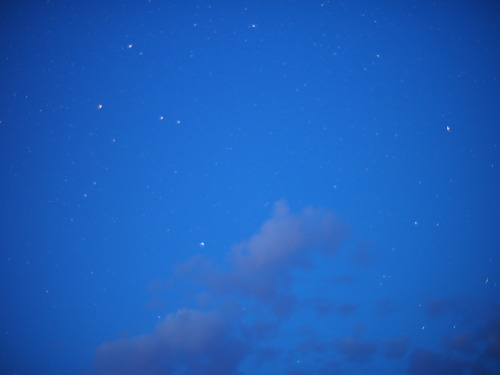An Total Solar Eclipse, 1905, Observed From Palma, Balearic Islands, Spain, Illustrated By Major Baden-Powell.

An total solar eclipse, 1905, observed from Palma, Balearic Islands, Spain, illustrated by Major Baden-Powell.
More Posts from Sidusglacies and Others

Claude Monet’s water structure and shades, II, transparent single picture version.









Do Earth-Sized Planets Around Other Stars Have Atmospheres? James Webb Will Find Out!
“Even so, because of its ability to measure light to high sensitivity far into the infrared, there’s a remarkable hope for determining whether these worlds have atmosphere regardless of any other measurements. As planets orbit their star, we see different phases: a full phase when it’s on the far side of the star; a new phase when it’s on the near side, and everything in between. Based on the temperature of the world at night, we’ll receive different amounts of infrared light from the "dark” side that faces away from the Sun. Even without a transit, James Webb should be able to measure this.“
The overwhelming majority of Earth-sized, potentially habitable planets that Kepler found are in orbit around red dwarf stars. In many ways, this is great: red dwarf stars are stable, temperature-wise, for longer than our Sun. Their planets are easier to detect, and they will be the first Earth-sized ones we can measure the atmospheres of directly. But even if we can’t make those measurements with James Webb, we’ll be able to learn whether they have atmospheres or not via a different method: by measuring the infrared radiation coming from the planets themselves in various phases. Just as we can measure the presence of Venus’ atmosphere from the hot, infrared radiation emanating from it even on the night side, we can make those same measurements with James Webb of other Solar Systems. By time the early 2020s roll around, we’ll have our first answers to this longstanding debate.
Many scientists think that Earth-sized planets around M-class stars will have no atmospheres left; others think there’s a chance they survive. Here’s how James Webb will find out!

i’m doing a short Photoshop class because i’m apparently not smart/millennial enough to teach myself so here’s a practice deer, messing around with selection tools and photo-editing with minor, minor doodling
tomorrow's schedule
7:30 am-8 am: wake up
8-8:30 am: drink a bowl of water with a spoon like soup
8:30 am - 4:00 pm: bring bronze age petroglyphs to life with my powers
4:00 pm-: haven't figured out this part yet
ancient greek word of the day: κλονοκάρδιος (klonokardios), heart-stirring, epith. of the thunderbolt


Stars again


Astronomy vignettes. Learning about our world. 1932.
-
 grandtheftpoptart liked this · 3 months ago
grandtheftpoptart liked this · 3 months ago -
 ghoul-scraps reblogged this · 3 months ago
ghoul-scraps reblogged this · 3 months ago -
 ghoulcarpool liked this · 3 months ago
ghoulcarpool liked this · 3 months ago -
 king-dra reblogged this · 3 months ago
king-dra reblogged this · 3 months ago -
 king-dra liked this · 3 months ago
king-dra liked this · 3 months ago -
 transgirlfiend reblogged this · 3 months ago
transgirlfiend reblogged this · 3 months ago -
 transgirlfiend liked this · 3 months ago
transgirlfiend liked this · 3 months ago -
 mega-moth reblogged this · 3 months ago
mega-moth reblogged this · 3 months ago -
 mega-moth liked this · 3 months ago
mega-moth liked this · 3 months ago -
 space-samurai-x reblogged this · 1 year ago
space-samurai-x reblogged this · 1 year ago -
 screenselkie reblogged this · 4 years ago
screenselkie reblogged this · 4 years ago -
 tower-in-the-sky reblogged this · 5 years ago
tower-in-the-sky reblogged this · 5 years ago -
 tower-in-the-sky liked this · 5 years ago
tower-in-the-sky liked this · 5 years ago -
 sidusglacies reblogged this · 5 years ago
sidusglacies reblogged this · 5 years ago -
 lily-of-elysium reblogged this · 5 years ago
lily-of-elysium reblogged this · 5 years ago -
 lily-of-elysium liked this · 5 years ago
lily-of-elysium liked this · 5 years ago -
 bananaofholograms reblogged this · 6 years ago
bananaofholograms reblogged this · 6 years ago -
 dichotomyofsorts reblogged this · 6 years ago
dichotomyofsorts reblogged this · 6 years ago -
 structureoflove reblogged this · 6 years ago
structureoflove reblogged this · 6 years ago -
 lightweight-prophets reblogged this · 6 years ago
lightweight-prophets reblogged this · 6 years ago -
 finalfvontier reblogged this · 6 years ago
finalfvontier reblogged this · 6 years ago -
 uemizuna reblogged this · 6 years ago
uemizuna reblogged this · 6 years ago -
 clublonely reblogged this · 6 years ago
clublonely reblogged this · 6 years ago -
 snaug reblogged this · 6 years ago
snaug reblogged this · 6 years ago -
 deeppaz reblogged this · 6 years ago
deeppaz reblogged this · 6 years ago -
 bucarda reblogged this · 6 years ago
bucarda reblogged this · 6 years ago -
 clementine-circaetis liked this · 7 years ago
clementine-circaetis liked this · 7 years ago -
 neoritro200x reblogged this · 7 years ago
neoritro200x reblogged this · 7 years ago -
 saishuheiki-u reblogged this · 7 years ago
saishuheiki-u reblogged this · 7 years ago -
 pixiesnaps reblogged this · 7 years ago
pixiesnaps reblogged this · 7 years ago -
 afterallitsjustanotherday liked this · 7 years ago
afterallitsjustanotherday liked this · 7 years ago -
 virgoisms reblogged this · 7 years ago
virgoisms reblogged this · 7 years ago -
 itstim reblogged this · 7 years ago
itstim reblogged this · 7 years ago -
 incohatus reblogged this · 7 years ago
incohatus reblogged this · 7 years ago -
 mirrorinthestar reblogged this · 7 years ago
mirrorinthestar reblogged this · 7 years ago -
 inhumanus reblogged this · 7 years ago
inhumanus reblogged this · 7 years ago -
 inhumanus liked this · 7 years ago
inhumanus liked this · 7 years ago -
 kb-p2730 liked this · 7 years ago
kb-p2730 liked this · 7 years ago -
 rivrogue reblogged this · 7 years ago
rivrogue reblogged this · 7 years ago -
 dieinbattle reblogged this · 7 years ago
dieinbattle reblogged this · 7 years ago -
 cyberspiders liked this · 7 years ago
cyberspiders liked this · 7 years ago

